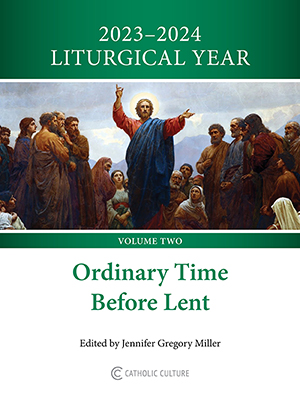The Calvary of Hungary's Cardinal Mindszenty
"I am Cardinal Mindszenty, and I would like to ask your ambassador for protection and shelter," said a middle-aged priest to the U.S. Marine guarding the entrance of the American embassy in Budapest, Hungary.
It was November 4, 1956, and the Soviet tanks were slaughtering the Hungarians' ephemeral but valiant independence movement. On October 23, when the people's anti-Kremlin revolution began, the freedom-fighters promptly released the cardinal from prison. But his freedom was short-lived, due to the Bolshevik resolve to quickly crush the budding revolt of that Warsaw Pact country.
The American ambassador welcomed the emaciated prelate to the life-saving refuge, which lasted 15 long years, until September 29, 1971.
Joseph Cardinal Mindszenty's self-imposed confinement became a constant embarrassment for both the Kremlin and Hungary's Communist government. On weekends, parents took their children to the embassy just to show them where the revered "Herceg-Primas" was continuing his captivity.
The Kremlin considered the cardinal's silent presence in the middle of the city the loudest and most effective anti-Soviet propaganda, and finally asked Pope Paul VI to get him out of the country. The ailing prelate was flown to Rome and the Holy Father received him with great honor: "You are and remain archbishop of Esztergom and primate of Hungary. If you need anything, just ask us!"
Mindszenty settled in Vienna, Austria, and soon began to visit the Hungarian refugees living in Europe and overseas, including the United States and Canada. He lectured, telling the whole world what was going on under Godless Soviet dictatorship. At one point, the embarrassed Kremlin tried unsuccessfully to have him silenced by the Vatican.
In 1975, the 83-year-old man was invited by the Hungarians of Australia. The long trip was too much for him, and upon his return to Vienna, he died on May 6, 1975.
The dauntless priest, who so infuriated the Kremlin, became the bishop of a small diocese in 1944. When he repeatedly opposed the German occupation of his country, he was jailed by the Nazis in November 1944. When Hitler withdrew his forces from Hungary in April 1945, Mindszenty regained his freedom. In August of the same year, the Vatican appointed the courageous prelate archbishop of Esztergom, and primate of the Catholic Church in Hungary. In February 1945, he was named a cardinal.
The victorious Red Army generals willingly approved his appointment, thinking that everybody who opposed Hitler, would or should favor Stalin. They did not realize that this strong-willed priest dedicated his life to serve God alone, and not some atheist dictators.
When the Kremlin-inspired persecution of the Hungarian Church began, Cardinal Mindszenty fought back. The country's Communist government could not tolerate the prelate's strong and quite effective opposition.
On Christmas Eve of 1948, he was arrested and tried by a KGB-style kangaroo court as a traitor and a U.S. spy. They sentenced him to life imprisonment.
Even during the trial, it was known in the West that the handwritten "documents" used as evidence against him were forgeries. They were fabricated by a handwriting expert, Lazzlo Sulner, who during the trial fled to Vienna and confessed his fraud.
On October 23, 1956, the freedom-loving Hungarians started a nationwide uprising against the Kremlin-supported Communist government. When the revolutionaries opened the gates of Mindszenty's prison, Pope Pius XII in a telegram expressed his joy over the primate's liberation.
Of course, Kremlin boss Nikita Khrushchev could not tolerate the rebellion of a Warsaw Pact country, and his tanks promptly rolled into Budapest to "save" the city from the "evils of Western capitalism."
On the evening of November 3, Mindszenty spoke on Budapest radio and sent a message to the Hungarian people: "Let every man know that this battle against the Kremlin's Godless tyranny is not an illegal uprising, but a morally justified quest for freedom."
During his speech, the mighty Red Army was already "liquidating" the last traces of resistance. Mindszenty knew that you cannot fight tanks and machine guns with slingshots and pocket knives, and the next day he asked the American ambassador for refuge.
On October 23, 1989, on the 33rd anniversary of the 1956 revolution, Hungary became an independent republic. In the spring of that year, the cardinal's remains were returned from Austria, and laid to rest in the Cathedral of Esztergom, the first stop of John Paul II, when he visited Hungary in August of 1991.
The Hungarian Church is getting stronger and stronger. It seems that Cardinal Mindszenty's sufferings were not in vain, and the old adage is still true: "Sanguis martyrum est semen Christianorum!" — "The blood of martyrs is the seed of Christendom!"
The most eloquent sign of revival is that since 1989, when Hungary became an independent republic, each year on December 24, the day the cardinal was arrested, special prayers are offered for him and the fallen freedom-fighters.
May they rest in peace!
© Wanderer Printing Co.
This item 7318 digitally provided courtesy of CatholicCulture.org






